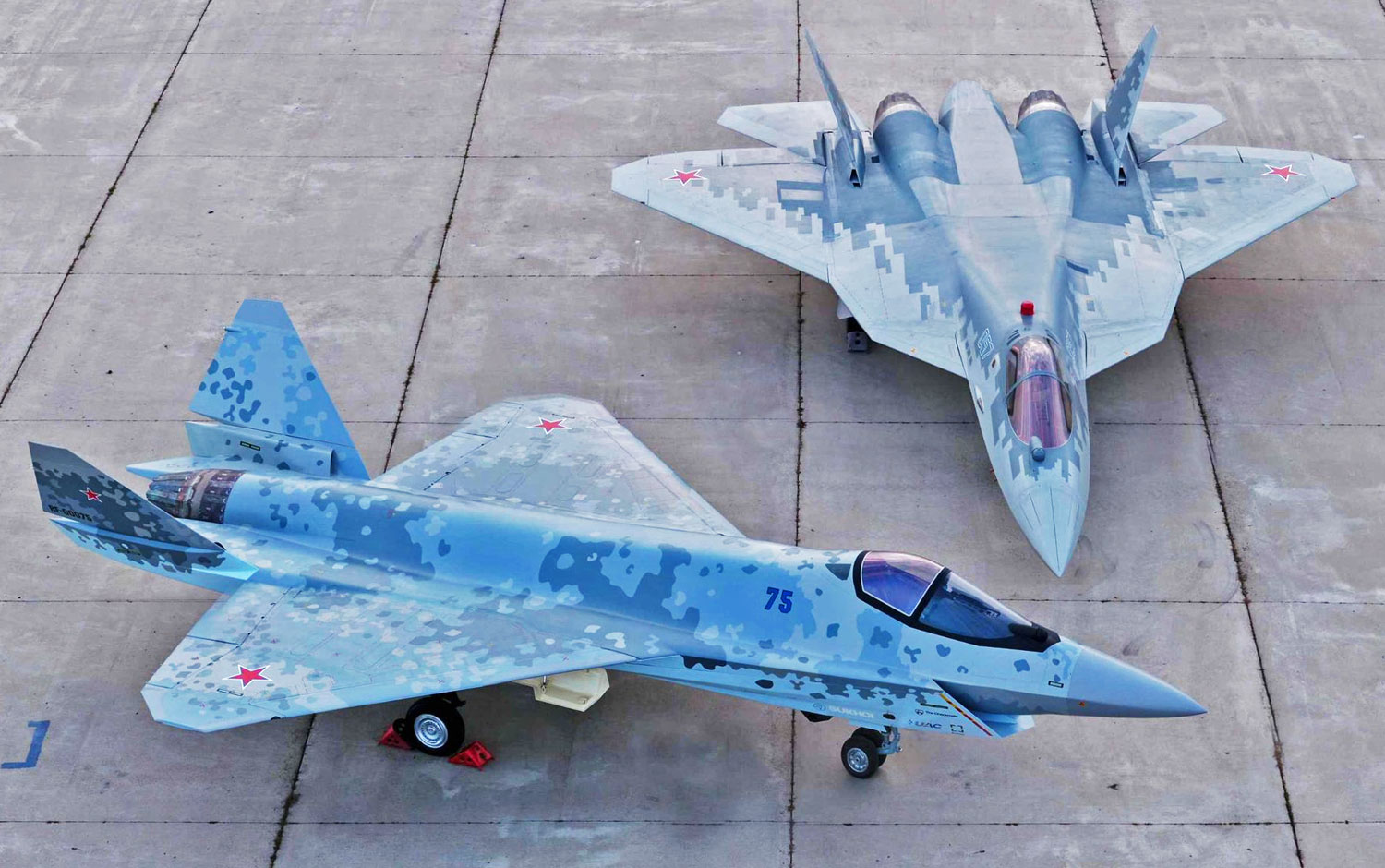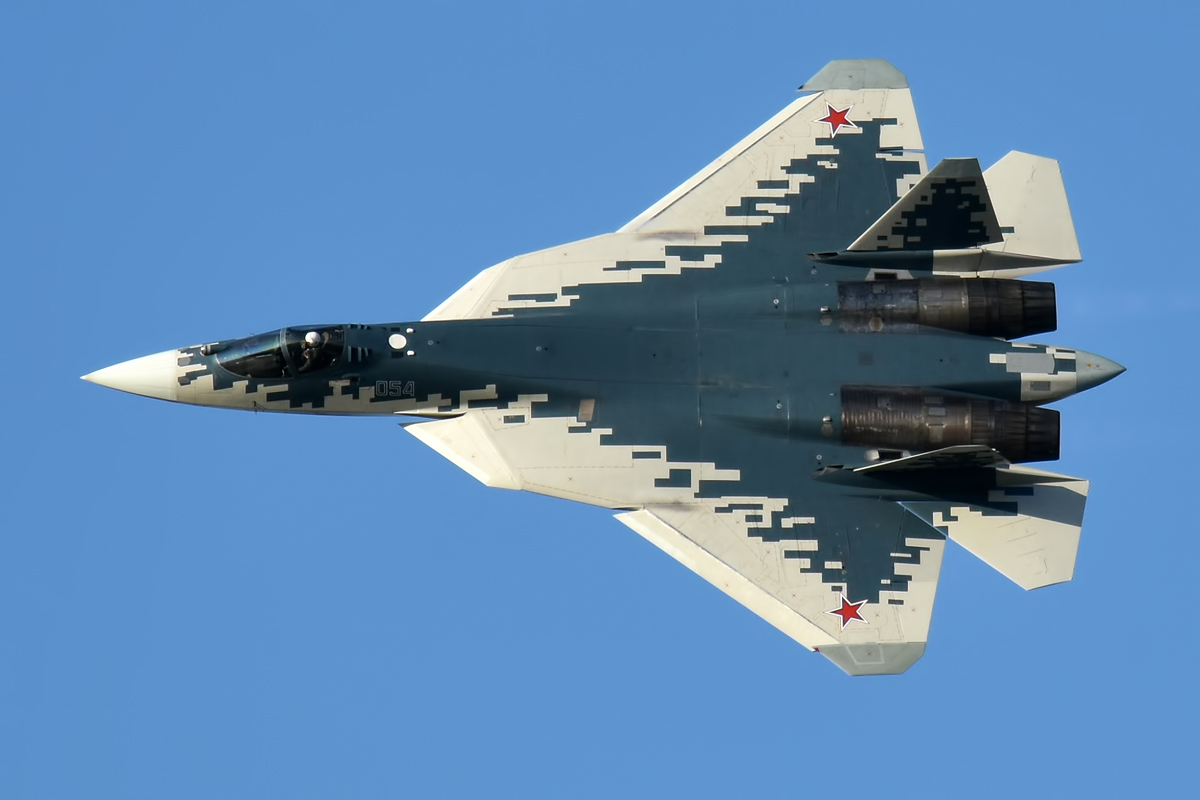The Russian MoD finally broke its silence on using Su-57 fighters in the ongoing special military operations (SMO). General Sergei Surovikin, commander of the joint group of troops in the area of the SMO, told reporters on Tuesday, October 18, 2022.
“In terms of the quality of combat use, I would especially like to single out the Su-57 fifth-generation multifunctional aircraft. Having a wide range of weapons, it solves multifaceted tasks of hitting air and ground targets in each sortie,” he said.
General Surovikin’s comment suggests that the Su-57 is being used both in the air-to-air and air-to-ground roles, and in both roles, it had scored hits.
Earlier, in June 2022, Izvestia had reported that Russia had deployed four Su-57 for the SMO, and the aircraft was being used to establish a tactical information network.
Earlier in 2018, Russia officially acknowledged using four Su-57 during the Syrian campaign. The State Duma’s expert council for the aviation industry, Vladimir Gutenev, said in July 2018.
“The stay of our four Su-57s in Syria has certainly allowed us to obtain additional information about the capabilities of this machine to detect American F-22s and F-35s that are in the same theatre of operations.”
In the subsequent paragraphs, we will discuss the weapons and tactics likely being employed by Russian forces for Su-57 in the abovementioned roles.
Syrian operational experience notwithstanding, many operational capabilities of the Su-57 likely remained to be tested before the start of the SMO on February 24, 2022. Therefore, Russian employment of the fighter has been cautious. Operational restrictions on its use likely include stand-off attacks and tactical information networking only.

Front Aspect Stealth
It’s widely believed that the Su-57 can be easier to detect by radar than US stealth fighters such as the F-22 Raptor & F-35 Lightning. What is not so widely known is that while the Su-57’s side and rear aspect stealth characteristics are not outstanding, its front aspect stealth is fairly decent.
That means if the Su-57 is flying at the same altitude as a US E-3 or E-8 AWACS and moving straight towards it, it will be difficult for the AWACS to track it. As a result, ground radars and AWACS will not easily see the Su-57 coming in head-on air-to-air or air-to-surface attack mode.
As a result, the Su-57 could easily fly to weapon release range undetected even by the mightiest adversary.
Air-to-Air Missiles
General Surovikin implied that Su-57s have brought down adversary fighters.
For air-to-air engagements, the Su-57 is equipped with the R-37M (RVV-BD) long-range missile, K-77M medium-range missile, and two short-range missiles – R-74M2 & K-MD (Izdeliye 300). The R-74M2 is an upgrade of the R-74 adopted for internal carriage, while the K-MD is a clean sheet design.

There have been no reports of close combat between the Su-57 and a Ukrainian fighter, nor a radar or visual sighting of the Su-57 in Ukrainian airspace. Any air-to-air kills by the Su-57 would need to be credited using either the K-77M or the R-37M missiles.
The R-37M has a range of 300 kilometers and the K-77M of 190 kilometers. Both missiles use dual pulse motors and are consequently very energetic during their end game, making it difficult for the adversary aircraft to break the lock. Equally importantly, they use active homing AESA seekers for terminal guidance.
Air-To-Surface Weapons
It can be safely assumed that in Ukraine, Russia has employed only those air-to-surface weapons with substantial stand-off range and have been adopted for carriage in the Su-57’s internal bomb bay. (External carriage of weapons would make the Su-57 visible to US AWACS as, say, a Su-35.)
As such, the choice of weapons would include:
-
Kh-58UShKE anti-radiation missile up to 245-kilometer range.
-
Kh-59MK2 Stealth Cruise Missile with a range of 285 kilometers. It’s a Kh-59MKM variant adopted for internal carriage and LO shaping. Kh-59MKM is intended to attack a broad range of stationary ground targets with known coordinates.
The X-59MKM is a fire-and-forget missile that can be operated with an illumination intensity of 10-3 to 105 lux, over any terrain and in any season. The missile flies a waypoint-defined route, cruising at terrain-dependent heights ranging from 50 to 300 meters. Max cruise speed is 1050 kph. The missile flight mission sets the missile low altitude flight route.
The missile is designed to penetrate statically hardened and buried targets. It is equipped with a 360-kilogram lethality package comprising a 40-kilogram array of four shaped pre-charges with a contact delayed-action fuse mounted under the radome and an organic 320 kilograms penetrating tandem warhead. The Kh-59MKM is claimed to penetrate up to three meters of reinforced concrete.
Targeting & Communication Networking
The Su-57 has advanced communication, target detection, and sensor fusion capabilities. Its S-111 communication system facilitates secure and jam-resistant R/T & data exchange with other aircraft, ground, aerial, and naval command and control posts.
The fighter also has a sensor fusion suite powered by a six-processor computer that provides visualization tools besides flight-relevant data display. The sensor fusion and communication suites facilitate real-time data exchange within the air group and with ground command posts.
Flying as an airborne tactical network, the Su-57 can detect Ukrainian air defense radar emissions and share a consolidated picture and ground control for real-time engagement of active adversary radars.
Russia is likely satisfied with the performance of the Su-57. It remains to be seen if US sanctions have constrained its ability to produce the fighter plane.
- Vijainder K Thakur is a retired IAF Jaguar pilot. He is also an author, software architect, entrepreneur, and military analyst.
- Reach out to the author at vkthakur (at) gmail.com
- Follow EurAsian Times on Google News




